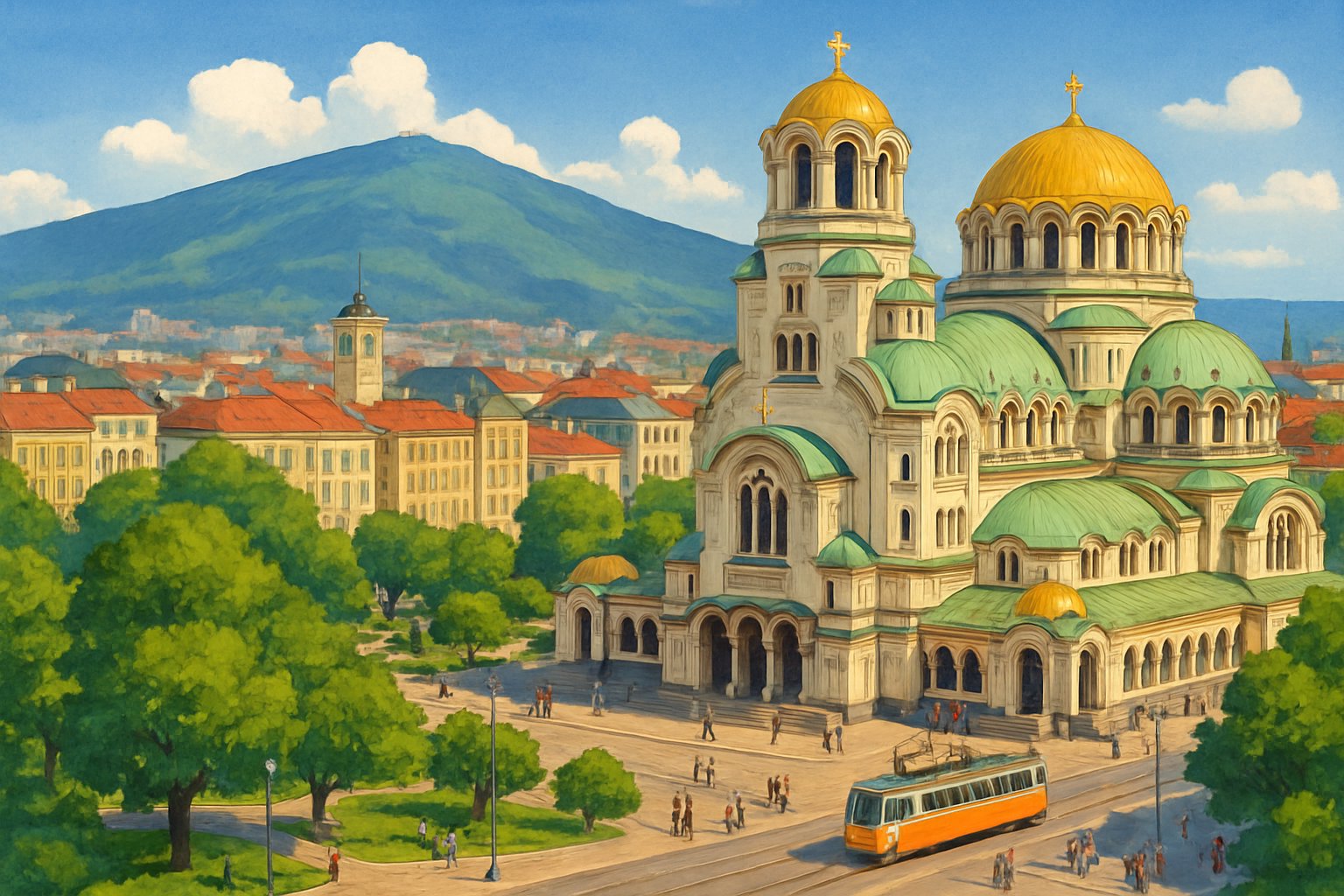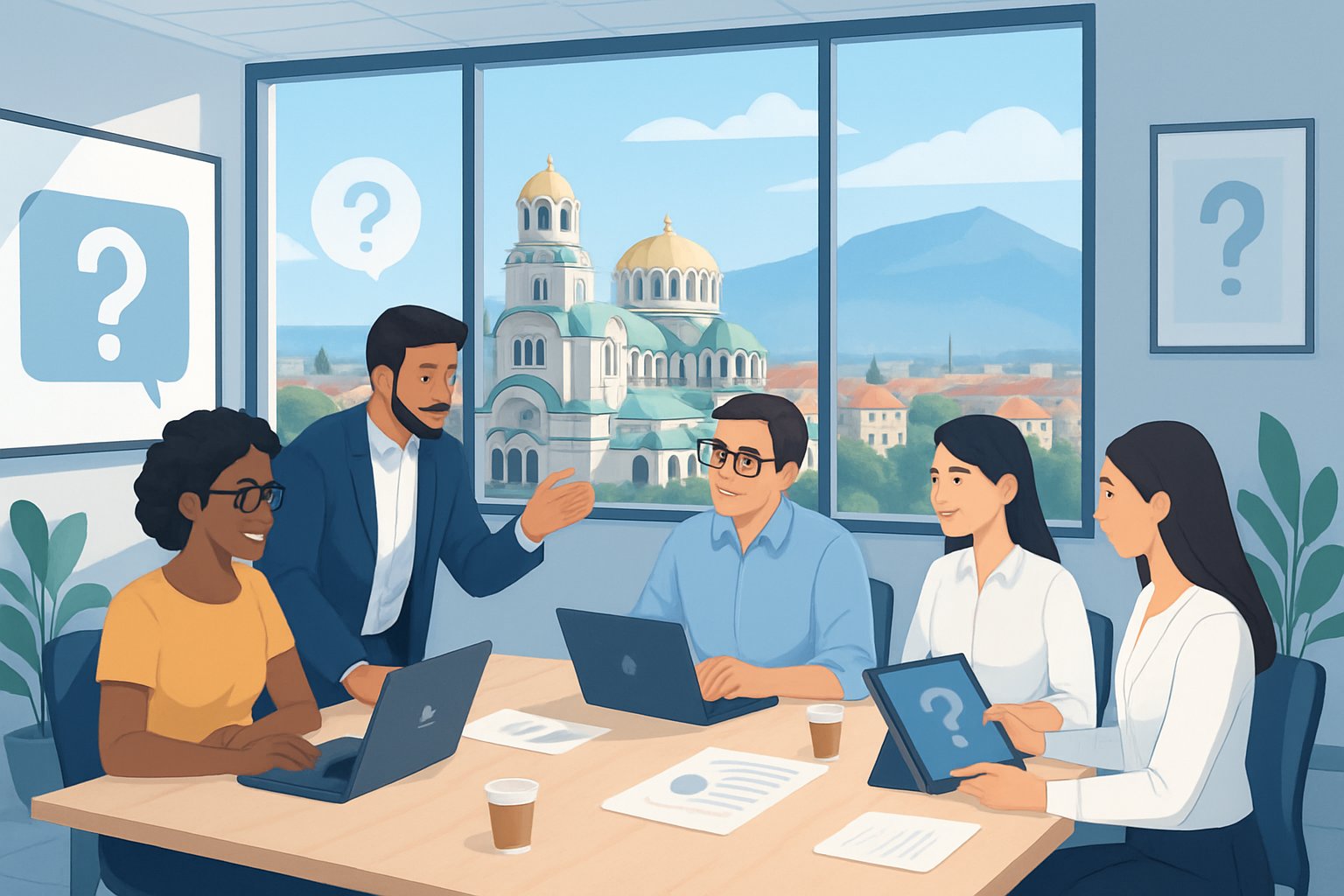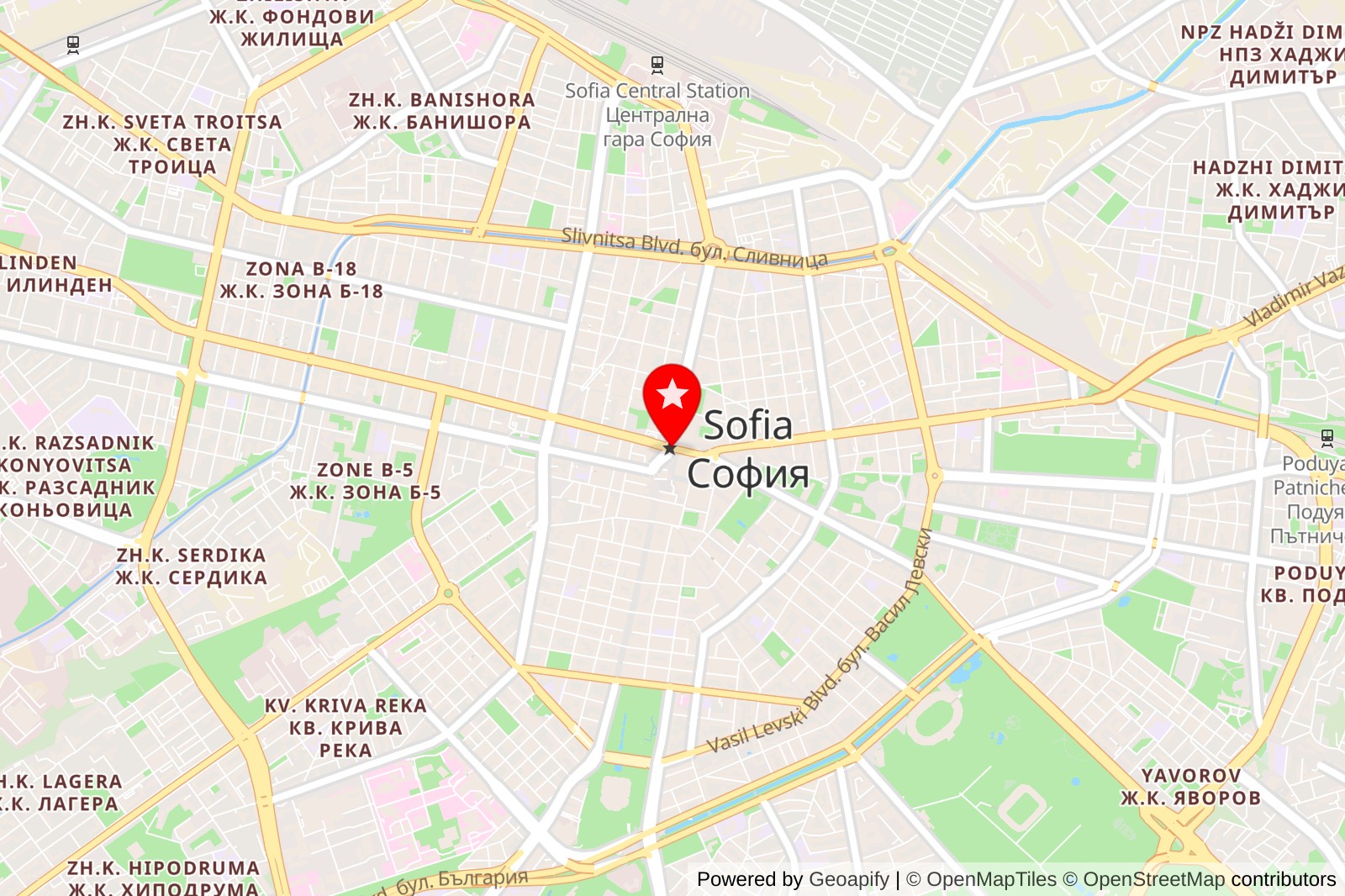Sofia is Bulgaria’s lively capital, where ancient history rubs shoulders with modern city life right in the heart of the Balkans.
Let’s dig into what makes Sofia so irresistible, from its deep cultural roots to the practical stuff that’ll help you get the most out of your trip.

Walking around Sofia, you notice how old traditions and new energy mingle everywhere. There’s a vibe here that’s hard to pin down—maybe it’s the way ancient ruins and cool coffee shops share the same block, or how the city is always buzzing but never loses its sense of history.
We’ll check out Sofia’s unique spirit, peek into its culture, and tackle those questions travelers always ask about Bulgaria’s capital.
1) Sofia
Sofia is the biggest city in Bulgaria and, honestly, it’s a bit of a surprise package. Old Roman ruins sit right next to glassy new buildings.
The city nestles in a valley, mountains all around, so you get these fantastic views from almost anywhere.
As you wander through Sofia, the mix of eras jumps out. Byzantine churches stand near blocky Soviet monuments, and then suddenly, you’re at a shiny shopping center.
The Alexander Nevsky Cathedral really stands out. Its golden domes catch the light, and you can spot them from all over town.
The city center feels walkable and friendly. We loved strolling along Vitosha Boulevard—it’s the main pedestrian drag, packed with shops, cafes, and restaurants.
Those yellow cobblestones? Never seen anything quite like them anywhere else.
Sofia’s metro area is home to about 1.4 million people. It’s Bulgaria’s hub for politics, culture, and business.
Most signs have English translations, which makes things easier if you don’t know Bulgarian.
Location: Sofia, Bulgaria
Website: Visit Website
Overview of Sofia, Bulgaria
Sofia sits in western Bulgaria, right at the base of Vitosha Mountain, with the Balkan range wrapping around it.
The city became Bulgaria’s capital in 1879 after the Ottomans left. It grew from a small settlement into a real European heavyweight—pretty wild when you think about it.
Geography and Climate
Sofia is located in western Bulgaria, tucked into the Sofia Valley.
The Sofia Basin forms a valley surrounded by mountains, putting the city close to the center of the Balkans.
Key Geographic Features:
- Vitosha Mountain – Just south of the city
- Balkan Mountains – Stretching to the north
- Sofia Valley – The actual basin Sofia calls home
- Central Balkan location – Makes Sofia a crossroads for the region
Those surrounding mountains shape the weather here. You really feel the difference in each season.
Sofia City Province covers 1,344 square kilometers, while the broader Sofia Province sprawls over 7,059 square kilometers.
Historical Significance
People have lived in Sofia since the Neolithic era. That means it’s one of Europe’s oldest continuously inhabited places.
Russian troops liberated Sofia from Ottoman rule on January 4, 1878. That moment really changed everything for the city.
Important Historical Dates:
- 1878 – Liberation from the Ottomans
- 1879 – Named the Bulgarian capital
- April 3, 1879 – Officially declared the capital
Back then, just 11,500 people called Sofia home. The population exploded in the decades that followed.
The city’s name comes from Saint Sofia Church, tying its identity to religious roots.
Now, Sofia ranks as the 15th largest city in the EU with 1.23 million residents. Ancient Roman ruins and modern buildings sit side by side, and somehow it all works.
Cultural Insights
Sofia’s culture blends Eastern Orthodox traditions with influences from all over, thanks to its history as a crossroads. Bulgarian is the main language, but English pops up more and more, especially in touristy spots and among younger folks.
Local Traditions
Orthodox Christianity shapes a lot of Sofia’s customs. You really see it during big holidays like Easter and Christmas—families gather, eat traditional food, and head to church.
Martenitsa is a favorite tradition. Every March 1st, people exchange red and white woven bracelets or pins to welcome spring. You wear them until you spot a stork or the first blooming tree—it’s a charming little ritual.
Name days mean a lot here, sometimes even more than birthdays. Each day honors a saint, and if you share that name, it’s your day to celebrate.
Food brings everyone together. Banitsa, a flaky pastry stuffed with cheese, shows up at almost every celebration.
At Christmas, families bake special bread with coins hidden inside for luck.
The Rose Festival is a big deal across Bulgaria. Even though the main party happens in Kazanlak, Sofia locals take pride in the country’s rose oil tradition and use rose products in daily life.
Language and Communication
Bulgarian uses the Cyrillic alphabet, which trips up plenty of first-timers. Street signs, menus, and official stuff mostly appear in Cyrillic, but tourist areas usually add Latin script too.
English proficiency depends on age. Folks under 30 often speak pretty good English. Hotel staff, central restaurant workers, and museum guides tend to manage well.
Many older residents know some Russian, thanks to history. Some also pick up German from work abroad.
Non-verbal cues mostly match European standards. Traditionally, Bulgarians nod down for “yes” and up for “no,” but in Sofia, that’s fading.
Politeness counts. People use formal greetings with strangers and elders. A simple “zdraveyte” (hello) or “blagodarya” (thank you) makes a good impression.
Frequently Asked Questions

If you’re planning a trip to Sofia, you’ve probably got a bunch of questions about how to get around, when to visit, and what to expect. Here are some of the things travelers usually wonder about Bulgaria’s capital.
What are some must-see attractions in Sofia?
Sofia’s packed with history—seriously, the city sits at the base of Vitosha Mountain and you can stumble across ancient ruins almost everywhere.
Don’t miss the Alexander Nevsky Cathedral. It’s one of the biggest Orthodox cathedrals anywhere, and those golden domes are impossible to ignore.
The National Historical Museum is a treasure trove, with artifacts covering 7,000 years of Bulgarian history.
Saint Sofia Church, which gave the city its name, dates back to the 6th century and sits right in the center.
How can one navigate around Sofia?
Public transport works well here—buses, trams, and metro lines all connect the main sights.
The metro is clean and runs often, making it a solid way to get around.
Taxis are everywhere, but using ride-sharing apps helps you avoid surprises on the fare. Locals expect tips, usually about 10%.
Walking is easy in the center. Most of the big attractions are close together, and the main pedestrian street links a lot of them.
What’s the best time of year to visit Sofia?
Late spring through early fall is the sweet spot for weather. May to September brings warm days and long evenings.
Winter gets chilly, sometimes snowy, but the city looks amazing in white. Museums and galleries stay open all year.
Summer draws the most visitors, so expect some crowds. If you prefer things quieter, spring or fall might suit you better.
Are there any linguistic barriers for English speakers visiting Sofia?
Bulgarian uses Cyrillic, so reading signs can be tricky at first. Still, most tourist areas have English alongside Bulgarian.
Plenty of people in hotels and restaurants speak English, especially younger staff. If you know a few basic Bulgarian words like “zdravey” (hello) or “blagodarya” (thank you), people appreciate the effort.
What is Sofia renowned for?
Sofia’s famous for its deep history—over seven millennia of it. You’ll see layers from different civilizations all over the city.
The mix of Roman ruins, Soviet-era blocks, and shiny new buildings gives Sofia a one-of-a-kind look.
It’s also surprisingly affordable compared to other European capitals. Your money just goes further here, whether you’re eating out or booking a place to stay.
How welcoming is Sofia towards LGBTQ travelers?
Sofia’s LGBTQ community keeps growing, but Bulgaria still feels more conservative than most Western European countries.
The capital city, though, generally shows a bit more acceptance than the countryside.
You’ll find several LGBTQ-friendly bars and clubs in Sofia, especially around the city center.
Every summer, Sofia Pride lights up the city.
It’s probably wise to stay discreet with public displays of affection, since local attitudes can really vary.
Tourist spots and younger crowds usually seem more open-minded.

